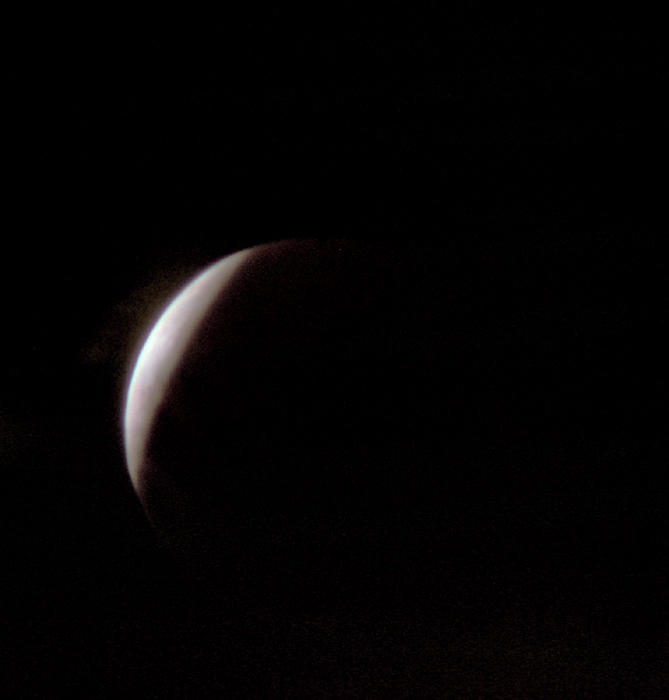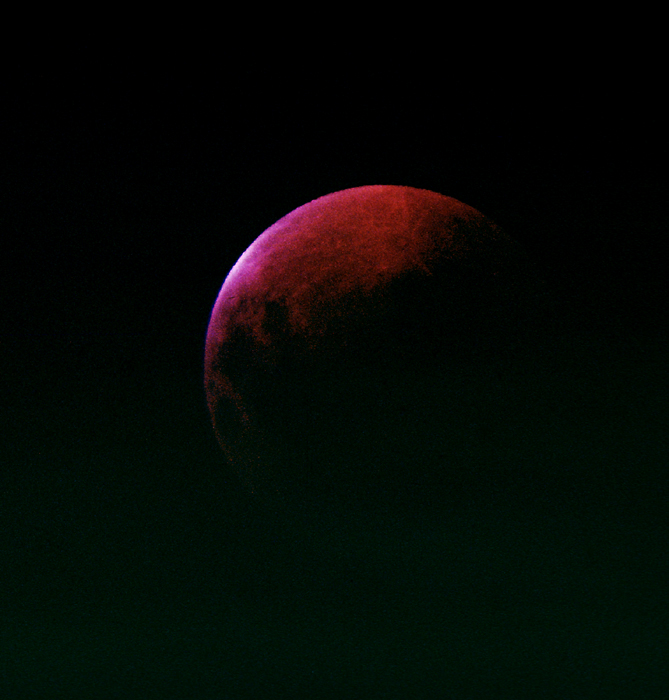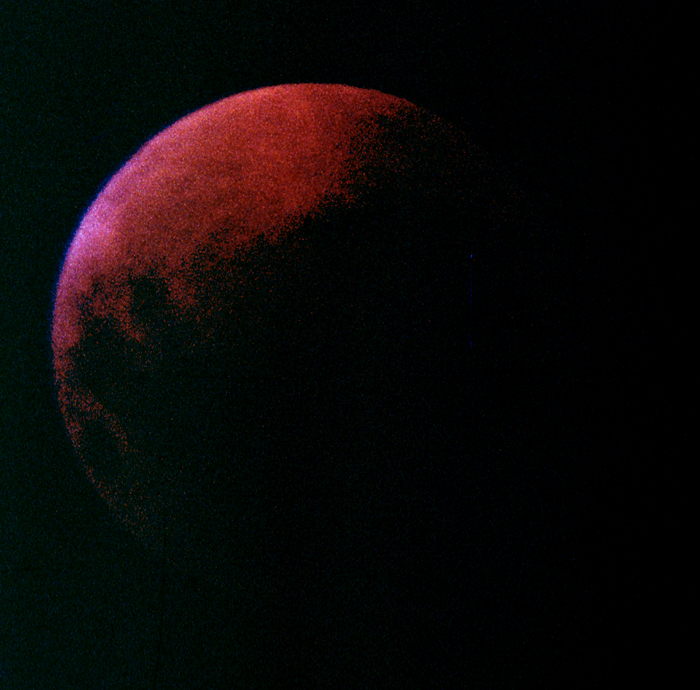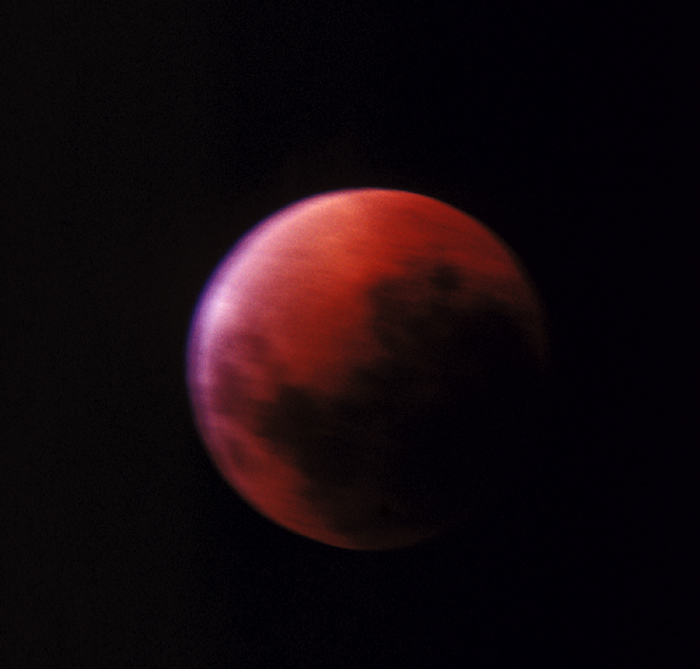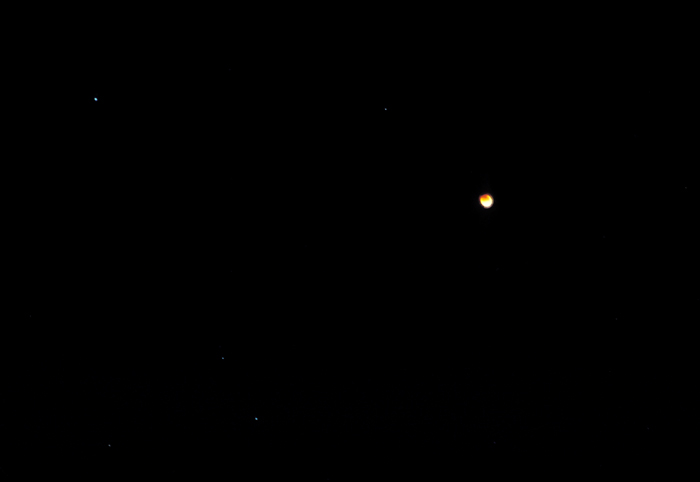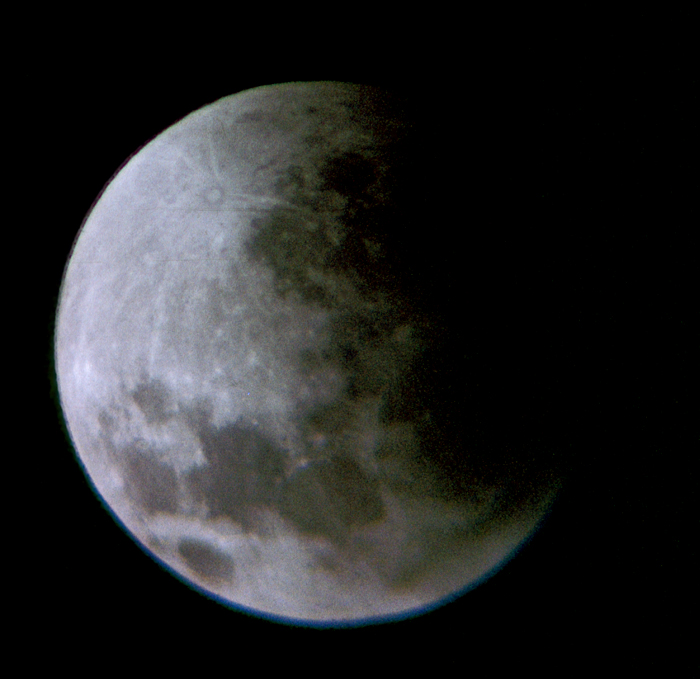
1/250 second exposure, Kodachrome 100 slide film.
5" f/5 refractor at prime focus.
About 20 minutes after first contact.
The total lunar eclipse of March 24, 1978, was very well placed to observe from Western Australia. Occuring during early autumn, the observing conditions were very good, with clear skies and warm temperatures. The circumstances of the eclipse were also very favourable from Western Australia, with mid-eclipse being almost at midnight with the moon almost at the zenith. The eclipse was also
The duration of totality was considerable, with totality lasted for over 100 minutes. On this occassion the Moon passed through the northern half of the Earth's shadow, with the south pole of the Moon passing very close to the centre of the shadow.
Since the mid 1970's I have been involved in a program of timing the shadow of the Earth as it passes over various features on the Moon. The purpose of these observations is to gather data on the upper atmosphere. The timing of features as they are covered by the shadow has always been much easier as it is possible to observe the feature as the shadow approaches. This enables you to be prepared for disappearence. Observing the reappearence can be much more difficult as there is little warning before the shadow leaves a feature. Also the direction of the shadow can lead to some confusion as to where various features are. The Moon looks like it is at 1/4 phase, but the shadow line is in the wrong place! In the end, for this eclipse I managed to time & disappearences and # reappearences.

